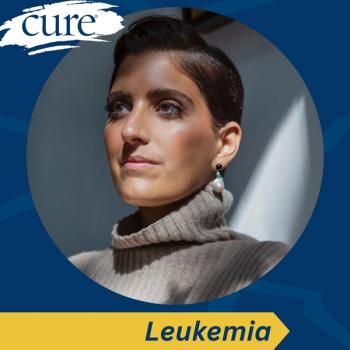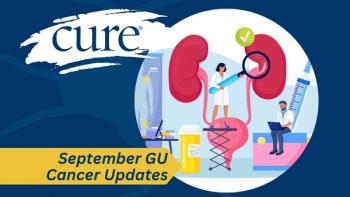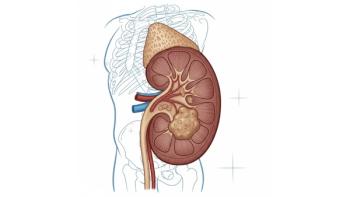
First Biosimilar to Treat Cancer Gets FDA Approval
The Food and Drug Administration approved the first ever biosimilar to treat a variety of cancers.
The Food and Drug Administration approved the first ever biosimilar to treat cancer.
Mvasi (bevacizumab-awwb; ABP-215), a biosimilar for Avastin (bevacizumab) developed by Amgen and Allergan, is indicated for the treatment of colorectal, lung, brain, kidney and cervical cancers in adult patients.
A biosimilar is a biological product that is demonstrated to be highly similar to an already-approved biological product, and that has no clinically meaningful differences in terms of safety, purity and potency from the reference product.
“Bringing new biosimilars to patients, especially for diseases where the cost of existing treatments can be high, is an important way to help spur competition that can lower healthcare costs and increase access to important therapies,” FDA Commissioner Scott Gottlieb, M.D., said in a press release. “We’ll continue to work hard to ensure that biosimilar medications are brought to the market quickly, through a process that makes certain that these new medicines meet the FDA’s rigorous gold standard for safety and effectiveness.”
Mvasi is approved for:
• First- or second-line treatment of metastatic colorectal cancer, in combination with 5-fluorouracil-based chemotherapy
• Second-line treatment of metastatic colorectal cancer, in combination with fluoropyrimidine-irinotecan- or fluoropyrimidine-oxaliplatin-based chemotherapy for patients who progressed on first-line Avastin
• First-line treatment of unresectable, locally advanced, recurrent or metastatic nonsquamous non—small cell lung cancer (NSCLC), in combination with carboplatin and paclitaxel
• Glioblastoma, as a single agent for patients with progressive disease following prior therapy
• Metastatic renal cell carcinoma, in combination with interferon alfa
• Persistent, recurrent, or metastatic cervical cancer, in combination with paclitaxel and cisplatin or paclitaxel and topotecan
There are several pending applications for biosimilars to treat cancer awaiting FDA consideration, including one for MYL-1401O, a biosimilar for Herceptin (trastuzumab). The FDA is expected to rule on a biologics license application for MYL-1401O to treat HER-positive breast cancer, HER2-positive gastric cancer and gastroesophageal junction cancer by the end of this year.
In July, the FDA’s Oncologic Drugs Advisory Committee voted 17-0 to recommend approval of Mvasi. Some committee members were concerned at the time about recommending approval for all six indications because all the data presented came from patients with advanced/metastatic NSCLC. They eventually determined that the pharmacokinetic (PK) data and method of action were consistent enough to warrant their support.
ODAC reviewed data from a pair of studies, the three-arm, single-dose PK study 20110216 that compared Mvasi with US- and EU-approved Avastin, and a comparative clinical study, 210120265. The second study compared Mvasi and EU-approved Avastin in patients with advanced/metastatic NSCLC to support the demonstration of no clinically meaningful differences in terms of response, safety, purity and potency.
In the PK study, 68 patients were assigned to Mvasi and 67 each were assigned to the Avastin groups. All healthy male participants (202 patients) received an infusion of 3 mg/kg.
Study 20120265 was a randomized, double-blind study comparing Mvasi (328 patients) and EU-approved Avastin (314 patients) in patients with advanced NSCLC. All patients received an infusion of 15 mg/kg every three weeks in combination with 6 AUC carboplatin and 200 mg/m2 paclitaxel for six cycles.
Overall response rate was 39 percent in the Mvasi arm compared with 41.7 percent for EU-Avastin. There were two complete responses in each group, and 38.4 percent of the Mvasi group had partial responses versus 41.1 percent in the Avastin group. Duration of response was 5.8 months for Mvasi compared with 5.6 months with Avastin.
Forty percent of patients in both groups experienced progression-free survival (PFS) events. Median PFS was 6.6 months for Mvasi versus seven months in the Avastin arm.
Trough serum concentrations (Ctrough) were collected on cycle 1 through cycle 4, and cycle 6 pre-dose to describe the PK of Mvasi and EU-approved Avastin. The study was not intended to evaluate PK similarity between the two arms, but investigators observed comparable Ctrough and inter-subject variability.
Investigators said safety outcomes were similar to the known toxicity profile of US-approved Avastin, and there were no meaningful differences in adverse events (AEs), serious AEs, deaths up to 30 days after last treatment dose, or treatment discontinuations. Reported grade 3/4 AEs were 42 percent in the Mvasi arm and 44 percent in the Avastin arm. No grade 3/4 AE exceeded a 2 percent incidence rate.
In a press release, the FDA reported that, as with Avastin, Mvasi’s label includes a boxed warning regarding an increased risk gastrointestinal perforations, surgery and wound healing complications and severe or fatal pulmonary, gastrointestinal, central nervous system and vaginal hemorrhage.





